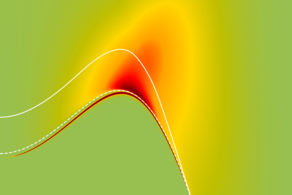Photon number coherence control for quantum cryptography
- Reiter

The promise of quantum cryptography based on single photons is a secure communication. However, the security can be comprised if the photons are not perfect. This is encoded in a quantity called Photon Number Coherence (PNC), which is defined as the phase between the zero- and one-photon Fock state.
In our new publication we show how we can control the PNC for photons generated by semiconductor quantum dots. We discuss two protocols to obtain the single photons: one relies on an incoherent relaxation process; hence, the PNC is always vanishing. However, also the number of obtained photons is rather low. The second protocol uses a coherent stimulation process, such that the phase relation might survive depending on the excitation parameters. We show the points on minimal and maximal PNC. The latter might also be useful in more advanced quantum cryptography protocols.
For this, we performed advanced experiments together with theoretical modelling, which are in excellent agreement. Our work will shape the implementation of secure communication in quantum networks.
The experimental work was led by the photonics group in Innsbruck together with Nanoscale Semiconductors group in Linz ; the Walther group from Vienna and the Quantum Communication Systems group from Berlin. Theory was performed in Dortmund together with the Axt group from Bayreuth.







